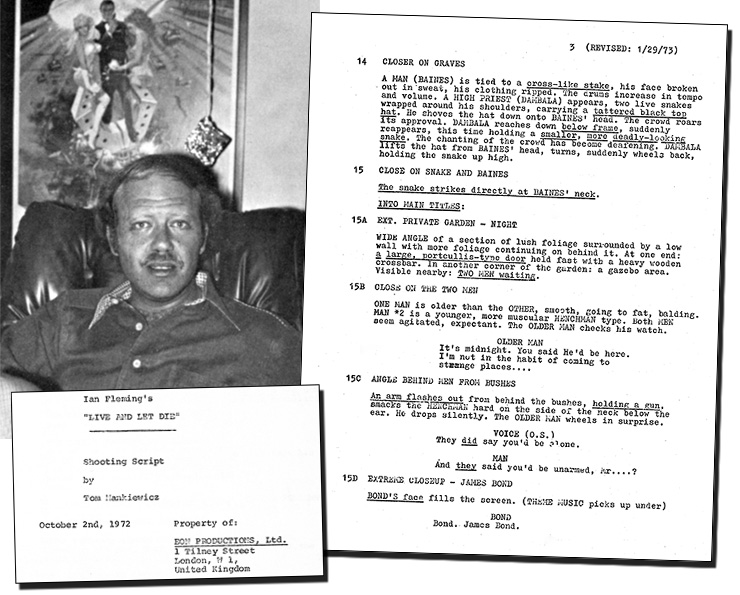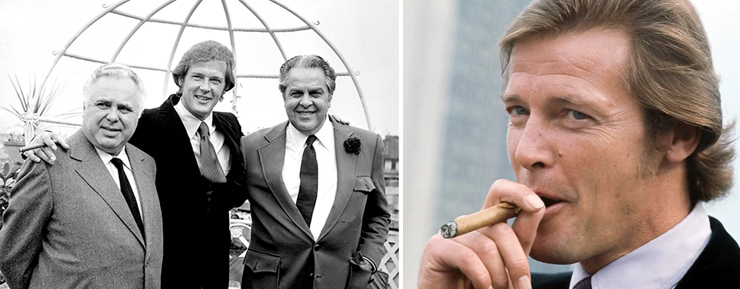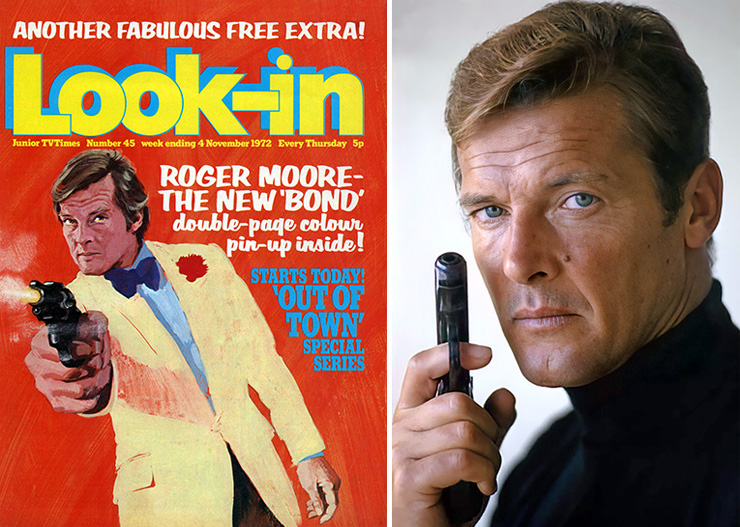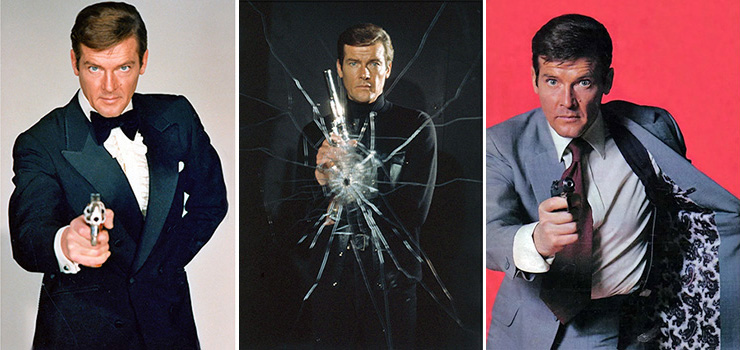 |
|
“All this and much Moore!” –
Live And Let Die at 50
KEVIN HARPER looks back at the production of Live And Let Die,
released 50 years ago as the eighth entry in the long-running James Bond
film series. Starring Roger Moore in his debut film as 007, Live And
Let Die proved that cinemagoers were willing to embrace a new actor in
the role, and one who would successfully portray James Bond on six further
occasions over the following 12 years. |
|
|
|
After the relatively poor
box-office receipts of On Her Majesty’s Secret Service (1969) when
compared to its predecessors, Sean
Connery had been tempted back to the role of James Bond for a
record-breaking fee in Diamonds Are Forever (1971), but had made it
clear that his return was a one-off, despite attempts by distributor
United Artists and American screenwriter
Tom Mankiewicz
to lure him back again. Connery had been very happy with Mankiewicz’s
contribution to the script for his comeback as 007, and in a 1971 BBC-TV
interview claimed it was one of the best of the series. Live
And Let Die had been announced as the next film in the series in the
end credits of Diamonds Are Forever, and Mankiewicz [pictured
below] had begun work on a script inspired by the popularity of a series
of so-called ‘Blaxploitation’ movies in the early Seventies, developing a
new storyline for Ian Fleming’s second James Bond novel, updating the
crime, smuggling and voodoo themes for a modern audience. For the first
time in its history the James Bond franchise was now following current
cinema trends rather than initiating them, hoping to lure in the huge
African-American audience then embracing the revolution in black cinema. |
 |
|
With Sean Connery adamant
that he was not returning to the series after the hugely successful
Diamonds Are Forever (1971), the filmmakers began searching for a new
actor to play James Bond for the second time in five years;
among those
tested at Pinewood Studios between 5th and 7th June 1972 were British
actors Jeremy Brett, Michael Billington, and
Julian Glover [who
would later play Kristatos in For Your Eyes Only (1981)]. Even
John Gavin, who had originally been cast as
Bond in Diamonds Are Forever was considered again, with American
actor Burt Reynolds being favoured by director Guy Hamilton. Clint
Eastwood was also approached by United Artists behind the producers back,
but ultimately Albert R. Broccoli was still convinced that Bond needed to
be played by a British actor. |
 |
|
ABOVE: Roger Moore
with producers Harry Saltzman & Albert R. Broccoli as he is
announced as the new James Bond at a press conference held at the
Dorchester Hotel in London on August 1, 1972. |
|
|
|
Roger Moore was an
immensely popular television actor and well-known to audiences
internationally via his performances in Ivanhoe (1958-1959), The
Alaskans (1959-1960), Maverick (1959-1961), The Saint
(1962-1969), and The Persuaders! (1971-1972). Moore had been
considered (but never tested) for the Bond role before, and was friends
with Bond co-producer Harry Saltzman. Although filled with glamorous
European locations, the interiors for The Persuaders! were filmed
at Pinewood Studios at the same time as Diamonds Are Forever
(1971), and Roger Moore and Sean Connery would often get together after
work, and maintained a lifelong friendship until Moore’s death in 2017.
Roger Moore also accompanied Sean Connery to the press screening of
Diamonds Are Forever (1971) at the ODEON Leicester Square on the
morning of Thursday December 29, 1971. |
 |
|
ABOVE: (left) Weekly
children's magazine Look-in [the junior TV Times]
announced the casting of Roger Moore as the new James Bond three
months after the press conference on August 1st, with an
illustrated front cover by Italian commercial artist Arnaldo Putzu
(1927-2012) showing Moore with long hair as
seen in The Persuaders! TV series. (right) A series of
official publicity photographs shot by renowned British photographer
Terry O'Neill (1938-2019) showed Moore after having his hair
styled
for the role of 007, and in a more iconic ‘Bond-like’ pose with
a Walther PPK. Terry O'Neill also photographed a series with the
principal cast in different poses (top of this page), and others
(below) of Roger Moore in different costumes (some holding a Smith
&
Wesson .44 magnum revolver) that were used throughout the advertising campaign on
(bottom right) on the cover of Moore's account of the filming
of Live And Let Die (actually ghost-written by EON
Productions publicist Derek Coyte from Moore's audiotape dictation
notes) published in paperback by PAN
Books in the UK. |
|
 |
|
|
Roger Moore declined to
sign for a second season of The Persuaders! knowing the Bond role
was now available. On August 1, 1972 Roger Moore was announced as the new
James Bond at a press conference held at the Dorchester Hotel in London.
Ironically, Moore had already played James Bond in a 1964 television
comedy sketch on Mainly Millicent – with popular English actress,
singer, and comedienne Millicent Martin. |
|
CONTINUED |
|
|
|
|

